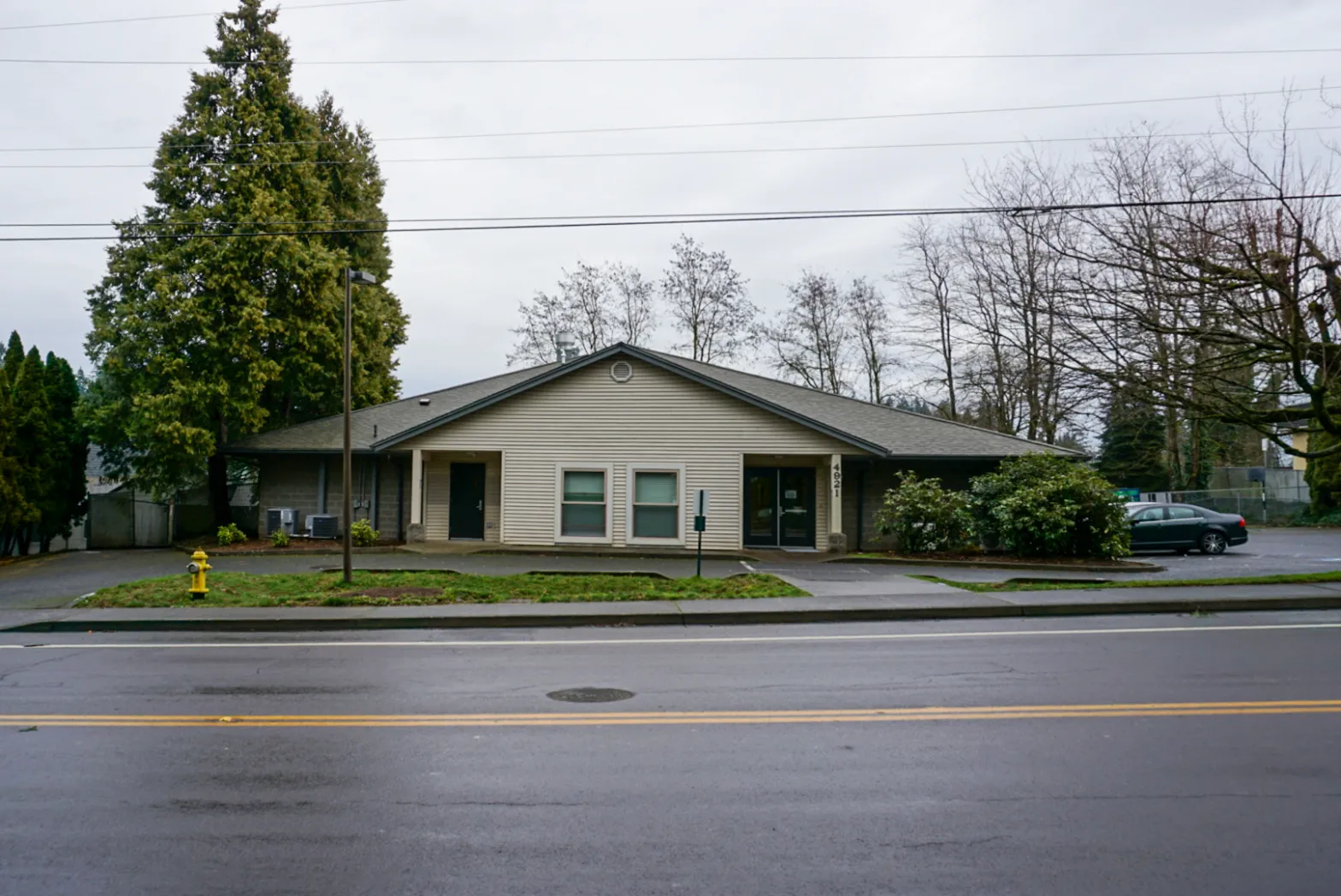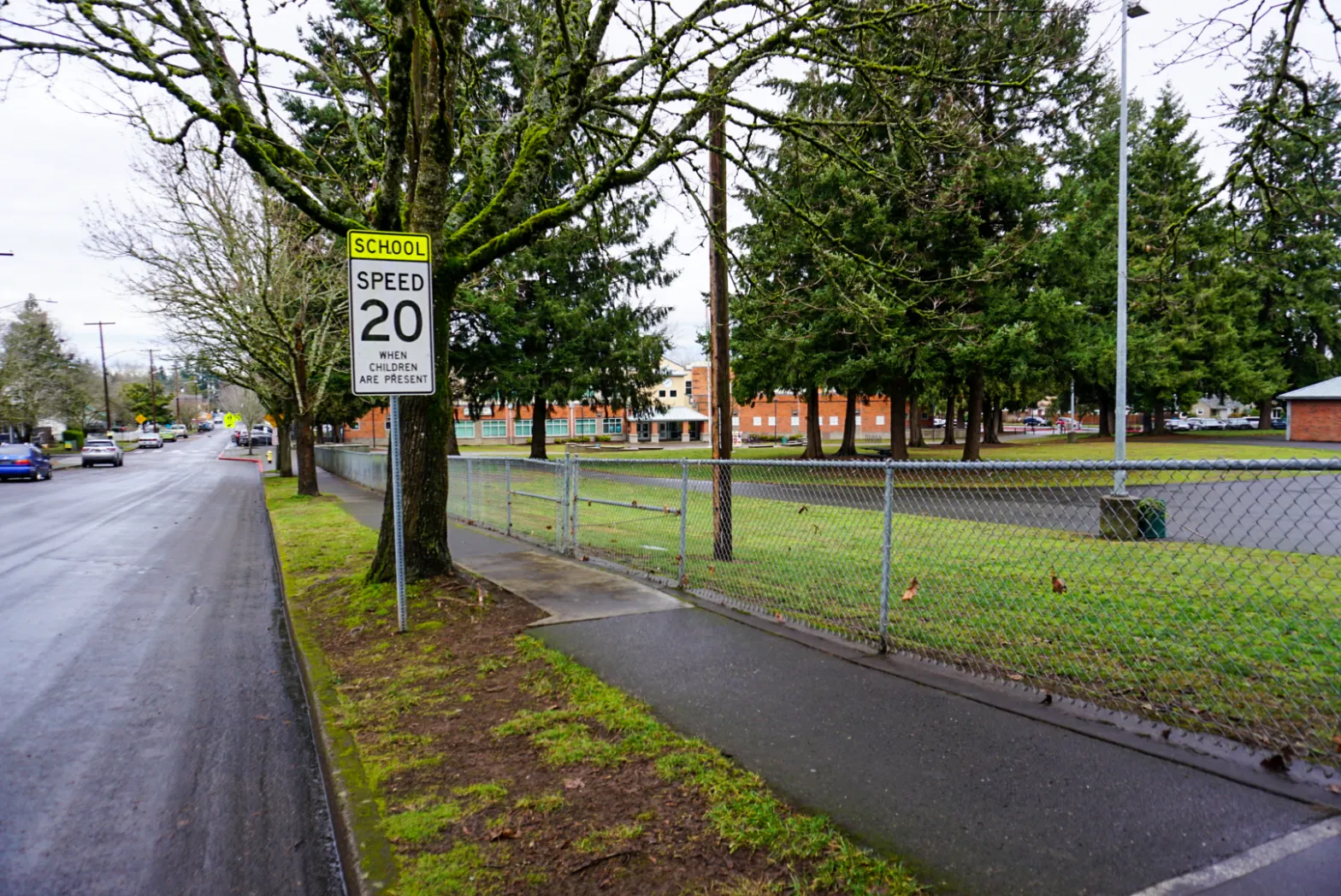This story about student homelessness was produced by The Hechinger Report, a nonprofit, independent news organization focused on inequality and innovation in education. Sign up for the Hechinger newsletter.
When her bill for overdue rent topped five digits, Resly Suka decided it was time to tell her kids they might lose their home.
A bout with Covid in late 2020 had forced Suka, a single mother of seven, to take time off from her job as a home hospice caregiver. That triggered a series of financial setbacks and, by October 2021, she owed more than $10,000 in back rent. Washington state’s eviction moratorium was set to expire the next month.
Suka feared what a notice-to-vacate would mean for her children. Her two youngest, both attending Vancouver’s Washington Elementary School, had struggled with remote learning and still lagged their peers in basic math and reading. Her older kids loved their high school sports teams and she couldn’t imagine uprooting them.
“‘Oh no, Mom. Please don’t make us go to another school. We like our teacher. We love our school,’” said Suka, recalling the conversation. “All I was thinking: ‘That’s true.’”
After her primary employer cut her hours — and her health insurance — Suka ended up in the emergency room for a heart attack. As she began to recover, Suka started making calls from her hospital bed to a local housing hotline seeking assistance. She never got a reply.
Then a cousin suggested she call her kids’ school. A woman she’d never met asked a few questions about Suka’s living situation and suggested she could get help with her utility bill. Within an hour, the woman called back and shared news of a second check — to cover up to $11,000 in overdue rent.
The assistance came thanks to a Washington state program — one of the first of its kind in the country — that aims to help children who aren’t considered homeless, and unqualified for help, under a strict federal definition.

In response to rising numbers of homeless youth here, state legislators passed a bill in 2016 that freed up money to enable schools to identify more students as homeless and get them into stable housing — even if they aren’t viewed as homeless by the federal Department of Housing and Urban Development.
In other parts of the country, though, the picture for homeless students is starkly different. Public schools identified 1.1 million kids as homeless in 2020-21, the most recent school year for which data was available. But roughly 85 percent of these children didn’t qualify for public housing assistance. While the federal Department of Education considers kids homeless if they are living in motels or doubled up with other people, HUD, which controls the purse strings for federal housing aid, requires that recipients live in shelters or on the street. That forces parents to move their families into cars or risk more dangerous living situations before they’re eligible for aid.
For years, advocates for homeless youth have tried to convince HUD and lawmakers to expand the agency’s definition to include anyone who can’t afford to put a roof over their children’s heads. Research continues to show the harmful impact of housing instability on kids’ learning: Each time students switch schools, for example, they are more likely to fall behind academically and less likely to graduate.
Homeless youth advocates succeeded in getting a bill to change the law’s language before Congress last year, but the legislation never got a hearing. And they must restart the legislative process with this year’s new congressional term.
“We do nothing to prevent the ‘hidden homeless,’” said Darla Bardine, executive director of the National Network for Youth, a nonprofit that works to end youth homelessness. “You have to sleep on the street for 14 days — you have to put yourself in danger for two weeks — before you’re eligible” for federal aid, she added. “That’s actually mandating long-term suffering before you extend a helping hand.”
A spokesperson for HUD said the agency does not support a broader definition to determine who’s eligible for housing aid, which the official described as “programs of last resort.” He said the law obligating schools to identify homeless kids was designed to help children who needed more stability at school, not who necessarily need immediate support to find a home.
“Our targeted homeless programs are grant funds, subject to annual appropriations from Congress. It’s not an entitlement program,” said the spokesperson, who spoke on the condition of anonymity.
The nation’s patchwork of solutions to homelessness dates to the McKinney-Vento Homeless Assistance Act of 1987, Congress’s first significant response to the problem. But beyond declaring that homeless children should have access to the same public education as other kids, the McKinney-Vento Act contained few protections for elementary and secondary students experiencing homelessness.
The law has since been amended several times; school districts now must identify and enroll any student experiencing homelessness. The education provisions of the law’s definition of homeless — “individuals who lack a fixed, regular and adequate nighttime residence” — encompasses unaccompanied and unsheltered youth, students in homeless shelters, kids living at a hotel or motel and children staying with friends or family due to economic hardship or similar reasons.

Once a school identifies a student as homeless, the federal government requires districts to pay to transport the student to their preferred school, regardless of cost or distance. Districts also can compete for federal funds — about $80 per homeless student — to cover the cost of clothes, prescription glasses and other school supplies, although funding is scant and only a fraction of districts receive the aid.
Federal law prohibits schools from spending any of that money on housing. Instead, educators direct families to local housing providers, which often rely exclusively on HUD funding and have few or no resources for students the agency does not consider homeless.
The discrepancy in defining homelessness can leave families, educators and housing providers with few satisfying, or safe, options. A shelter manager in Bozeman, Montana — where a population boom has priced many locals out of housing — lied on a housing application so a young mother of three who’d spent her tax refund on a hotel room wouldn’t have to move her family into their car. In Vancouver,a shelter provider had to inform callers to its housing hotline that they might have to stay in their car for two weeks before they could get help.
Families “have to get into more desperate situations in order to qualify for services,” said Vivian Rogers Decker, who manages the homeless student stability program for Washington state’s education department. “They won’t be able to just get it while doubled up. They would have to progress into the car and onto the streets or have one night of what others might call ‘literal homeless’ in order to get those services.”
One reason the requirements haven’t changed is opposition from some national homeless organizations. The National Alliance to End Homelessness, an influential Washington, D.C., nonprofit, has lobbied since at least 2015 against expanding HUD’s definition, arguing it would further strain the nation’s system of housing providers, which already struggle to serve the millions who count as “literal” homeless.
Crushed by negative news?
Sign up for the Reasons to be Cheerful newsletter.“That would add millions of families with no additional funding,” said Steve Berg, the group’s vice president for programs and policy. “It sort of calls on the homeless programs to have more people eligible without being able to help them. It just means saying no to a lot more people.”
Unless the government allocates more funding for homeless aid, Berg added, the increased competition for already limited services could leave chronically homeless individuals without help.
“People in more stable situations have an easier time getting help,” he said. “They can keep appointments. They can get to them. So, it’s not just saying no more often. I’m afraid it would mean people who need help the most would be squeezed out.”
And some educators worry about further extending the role of schools to include housing navigator. Many districts are already struggling to comply with the federal mandate to employ a homeless liaison, and that duty is often given to school or district administrators who don’t have time for it. Mike Carr, a retiring liaison in the Washington County School District in southern Utah, said it’s hard not to worry at night about all the families he can’t help. “Every emergency cannot always be my emergency,” he said.
Similar debates played out in Washington state in 2016, when the bill to help alleviate student homelessness was before the state legislature. Lawmakers questioned whether it made sense to spend public dollars on kids who could finish their homework at a friend’s kitchen table or in a hotel lobby, rather than on children living in a homeless shelter or on the street.
But research suggests any housing instability — whether that means sleeping in a tent or a cousin’s basement — harms the ability of young people to learn. Regardless of how and where homeless students find a place to sleep each night, their academic performance suffers equally, according to a 2019 analysis of state education data by the homeless advocacy group Building Changes. The Seattle-based group found students experiencing any form of homelessness posted lower rates of attendance, graduation and academic proficiency. Low-income housed students, meanwhile, performed much better.
“Homeless is homeless is homeless,” said Liza Burrell, managing director of programs for Building Changes. “These definitions don’t matter. When it comes to academic outcomes, any instability takes up so much of our young peoples’ brain energy. That doesn’t create a great moment for learning.”
That message resonated with state lawmakers, and the 2016 bill passed with bipartisan majorities in both chambers. The program financially incentivizes housing providers and school districts to partner on homeless prevention. School districts also receive state grants to boost what little, if any, money they get from the federal government to find and support unhoused kids. Funding for housing providers, meanwhile, can cover rental assistance, emergency shelter, case management and other services for all students identified as homeless — including those who live in hotels or couch-surf.
Early findings suggest the program has provided stability to some families and students, although it’s not a panacea. According to a Building Changes evaluation for the state, two-thirds of households that participated in the program in 2020 and 2021 stayed in or secured permanent housing, while a quarter ended up in less stable situations, such as shelters. Housing providers primarily used the grant money they received — roughly $460,000, combined — to help families cover past due rent, landlord fees and other forms of rental assistance or move-in costs like security deposits and application fees.
In Vancouver, the homeless student stability program covered the entirety of Resly Suka’s overdue rent. Her kids didn’t have to relocate across the city — or across state lines, a common move along the Columbia River here — and had the chance to stay in their schools.
“It’s hard on homeless kids,” said Suka. “But at least we can help them focus on school if they have a place to stay.”
When Suka took her cousin’s advice to call her kids’ school for help, Elizabeth Owen picked up the phone. Owen works as the community resource coordinator at Washington Elementary, helping families navigate services, like housing aid. The school identified 16 students as homeless — out of a total enrollment of 250 — during an annual count for the 2021-22 school year. The district as a whole counted nearly 750 homeless students, up from about 620 students during the 2020-21 school year.
Owen has the local housing providers on speed dial: She knows which receive the state grants that can actually help those families. If circumstances forced her families into neighboring Oregon, it’s a gamble whether Owen’s counterparts in school districts there will have the same ability to help.
“We live in a system that’s extremely hard — it was set up to be difficult,” she tells parents and guardians. “But we’ll figure this out.”








